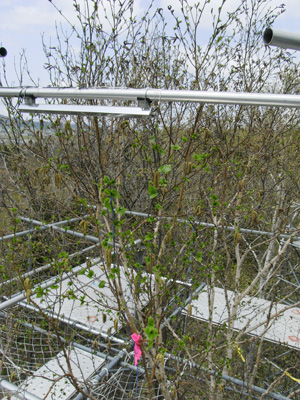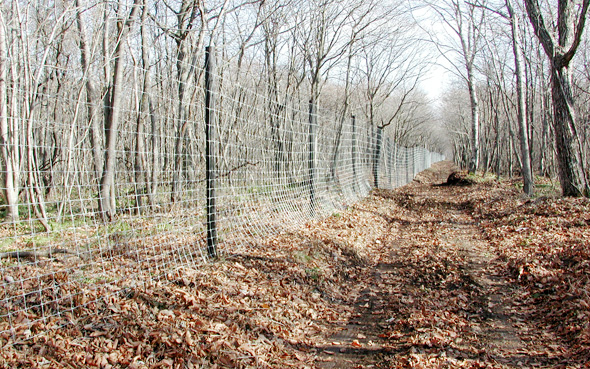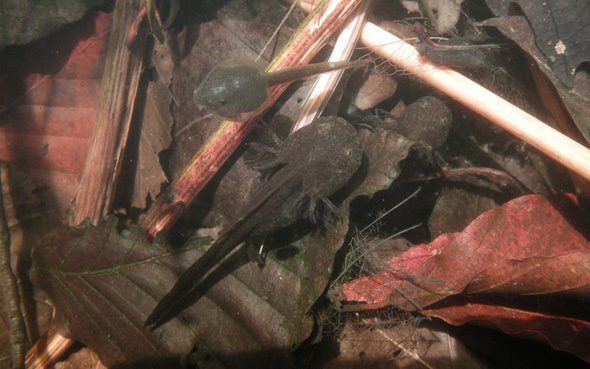Research
This course consists of the following four research groups:
(1) Forest Environment and Function,
(2) Biodiversity,
(3) Regional Resource Management.
In the world’s largest university forest, graduate students
address their thesis research focusing on particular topic. Our
studies cover wide variety of topics such as ecology and evolution
of wildlife (animals and plants), ecological interactions, global
warming, atmosphere pollution, invasive species, and land use
conservation, etc. According to their research topic and
supervisor, graduate students do their research in laboratories of
our Experimental Forests (Sapporo, Tomakomai, Wakayama, Teshio,
Nakagawa and Uryu) and Northern Forestry Research and Development
Office in Nayoro city.
<Research Projects>
Development of a sustainable forestry regime in northern Hokkaido
We are conducting an unprecedented forestry study since 1966 in a large-scale (110-ha) plot in a natural mixed forest. The original study have focused on sustainability of timber production using selection cutting, but its significant results of individual tree’s dynamics with spatial data enable us to utilize the site for various ecological studies. Additional data on ecosystem functions such as biodiversity, together with data from remote sensing, are now available to update the management regime, as well as our knowledge on natural forest ecosystems.

- Study site:Nakagawa Experimental Forest
- Contact:YOSHIDA Toshiya・NAKAMURA Masahiro
Warming experiments: Impact of global warming on northern forest ecosystems
To better understand the response of northern forest ecosystems to global warming, we conduct warming experiments of oak Quercus crispula (Climax species) and birch Betula ermanii (Pioneer species) with electric heating cables. Using canopy crane and scaffolding systems, we can directly observe insect-plant interactions and ecophysiological function (ex. photosynthesis and respiration) of canopy regions of warmed mature trees (20m in height). Moreover, we investigate the direct and indirect effects of global warming on distribution decline of siberian dwarf pine (Pinus pumila) grown near forest line.
 Experimental
warming of canopy region of birch trees (Betula ermanii)
using infrared lamp in Nakagawa Experimental Forest
Experimental
warming of canopy region of birch trees (Betula ermanii)
using infrared lamp in Nakagawa Experimental Forest
- Study site:Tomakomai Experimental Forest, Nakagawa Experimental Forest
- Contact:NAKAMURA Masahiro・NAKAJI Tatsuro
- Website
The effect of snowpack changes due to the climate fluctuations on the functioning of nutrient cycles in forest soil
This research project focuses on how the increase of freeze-thaw cycles associated with the decrease of snowpack impacts on biogeochemical processes in forest soil during dormant season including early winter and spring. The field incubation of forest surface soil with transplanting has been conducted at many forest sites in Japanese archipelago with natural climate gradient to predict the change of soil nitrogen mineralization and nitrification with the alteration of snowpack regimes. The field research on the impact of winter climate change on soil microbe, fungi, vegetation is also involved with various analytical and experimental approaches.
- Study site:Uryu Experimental Forest, Many forest sites in Japan
- Contact:Hideaki SHIBATA
Development of integrated information on terrestrial ecosystem
The collaborative study of satellite remote sensing and ground observation is conducted to develop the integrated information and assessment algorisms of terrestrial ecosystems to predict the current status and future direction of the ecosystem structure and functioning (i.e. carbon sequestration, phonological changes and so on) in broad spatial scales under changing environment and climate.
The detailed spatial information of diverse and complex features of forest is necessary to understand the mechanism and functions of forest. This research project tries to apply the laser investigation to quantify the three dimensional structure of forest stand.
- Study site:Nakagawa, Uryu, Teshio and Tomakomai Experimental forests
- Contact:Hideaki SHIBATA
Interactions between deer and forest community
We established a deer enclosure (16.5ha), deer exclosures (total 2ha) and control sites (total 20ha) in an oak forest. We introduced several deer into the deer enclosure to realize condition of high deer density. We also manipulated productivity of forest floor vegetation by logging canopy trees and fertilizing. Then, we have been studying interactions between deer and forest community; vegetation, birds, soil animals and arthropods.

Experimental barrier for Sika deer to investigate impacts of Sika Deer on plant and animal community
- Study site:Tomakomai Experimental Forest
- Contact:AGETSUMA Naoki
Ecological consequences of phenotypic plasticity in predator-prey interactions
Some predator and prey species evolve phenotypic plasticity in their behavior, morphology and life history traits as an adaptive strategy. Aim of this project is to reveal impacts of phenotypic plasticity of predator and prey at population and community level properties. We conduct many laboratory and field experiments using salamander larvae and frog tadpoles as model organisms.

Ezo salamander larvae (bottom) and Ezo brown frog (top)
- Study site:Teshio Experimental Forest
- Contact:Osamu KISHIDA
Population and community ecology of intra-populational trait variation.
In general, wildlife population consists of various types of individuals. But, traditional aspects of population ecology and community ecology assume homogeneity of individuals. Objective of this project is to explore ecological meanings of trait variation among individuals. We research (1) how individuals with different phenotypes interact, (2) how direct and indirect interactions among the individuals affect population and community dynamics by comparing experimental populations with large and small trait variations. Experimental models are amphibian larvae (frog and salamander) which play a prominent role in pond community dynamics.

Cannibalism of Ezo salamander larvae (Hynobius retardatus)
- Study site:Teshio Experimental Forest
- Contact:Osamu KISHIDA






